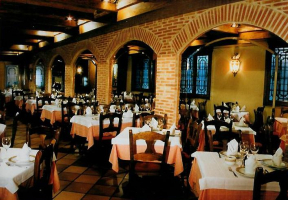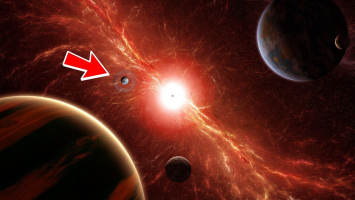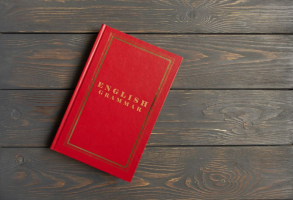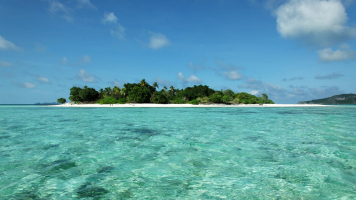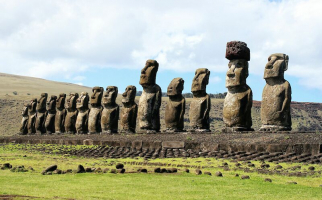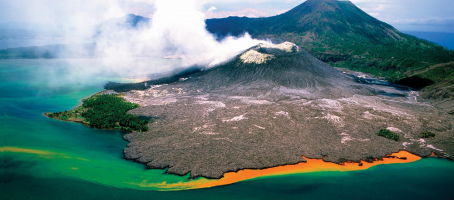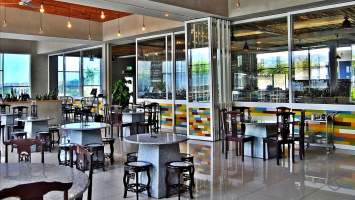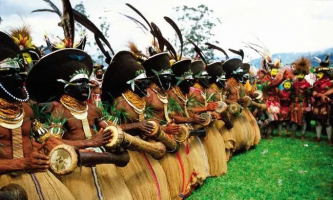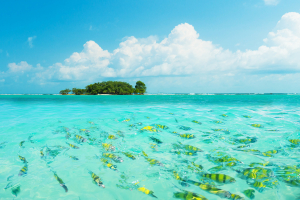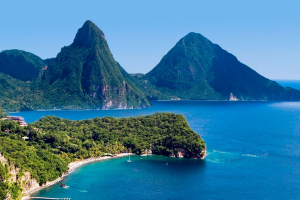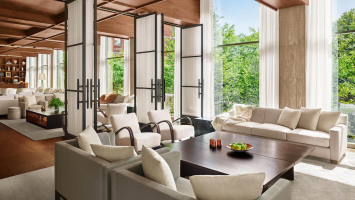Top 7 Buildings Will Make You See Norway in a New Light
Norway's attraction is incredibly simple: it is one of the most beautiful places on the planet. Impossibly steep-sided Norwegian fjords of amazing beauty carve ... read more...gashes deep into the interior from a rocky shoreline. Elsewhere, the interior of Norway's rocky topography resembles the ramparts of a natural castle. These eight modern structures will provide you with a new perspective on this Scandinavian country. Read on for more information.
-
The Norwegian Glacier Museum (Norwegian: Norsk Bremuseum) is a museum in the Norwegian county of Vestland. Sverre Fehn, the architect, designed the structure. In 2002, it was decided to construct an expansion to the museum, which was also designed by Fehn. The museum now contains the Ulltveit-Moe Climate Centre, a 2007 extension built by Fehn. The museum's declared mission is to "collect, produce, and distribute information about glaciers and climate". It contains information about the Jostedalsbreen glacier and the Jostedalsbreen National Park. The museum is open every day from April to October.
The Norwegian Trekking Association, the International Glaciological Society, the Norwegian Water Resources and Energy Directorate, the Norwegian Polar Institute, the Sogn og Fjordane University College, the University of Bergen, and the University of Oslo collaborated to establish it. Sarner Ltd, a museum and attraction design firm located in the United Kingdom, was commissioned in 2006 to produce an experience display about climate change. Former US Vice President Walter Mondale inaugurated the exhibit Our Fragile Climate in July 2007. The structure is constructed out of geometric shapes, with a long rectangular exhibition corridor and a cylindrical lecture hall among them. All of these changes provide dynamism to the overall framework.
Location: Fjærland, Vestland, Norway
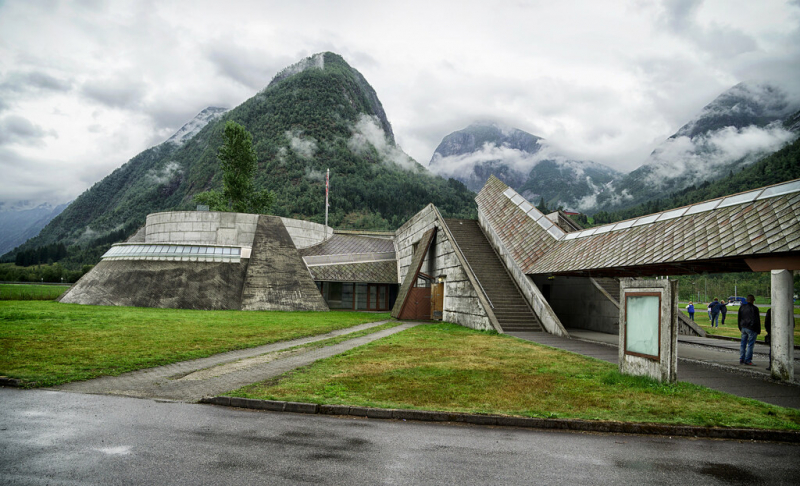
flickr.com 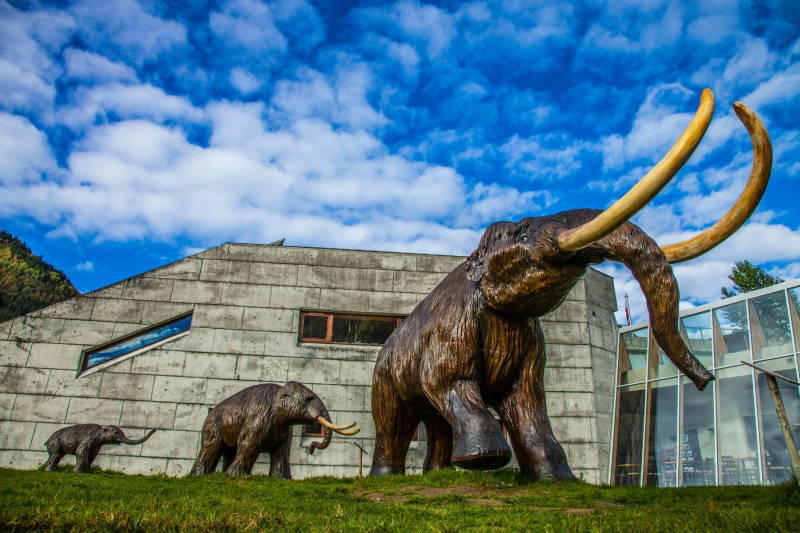
flickr.com -
The extraction of oil is a significant industry in Stavanger. Some 20 years after the oil boom, the geology and, in particular, the history of crude oil extraction in this region were commemorated with the establishment of a museum that covers all elements of this rich resource. Stavanger, Norway is home to the Norwegian Petroleum Museum (Norsk Oljemuseum). The building was designed by Lunde & Lvseth Arkitekter A/S and inaugurated on May 20, 1999. From the water, the museum seems to be a tiny oil platform. The museum's distinctive construction has made it a landmark in the Port of Stavanger.
The museum is around 5,000 square meters in size and was constructed of stone, glass, and concrete. The museum is dedicated on offshore petroleum activity, particularly in the North Sea. The museum exhibits artefacts, videos, pictures, and other things that record Norwegian oil and gas activity. The museum depicts the technological evolution of Norwegian oil from the mid-1960s, beginning with the earliest North Sea drilling platforms and progressing via steel and concrete platforms created and manufactured in Norway to contemporary, adaptable production ships and subsea systems. Visitors enter the museum through the large gray stone edifice, and as they go through the exhibition, the original closed and strong construction opens out to integrate the sea. Landing on the platform after learning of drilling and extraction, the journey ends where the story of oil begins in the sea.
Location: Kjeringholmen 1A, 4006 Stavanger
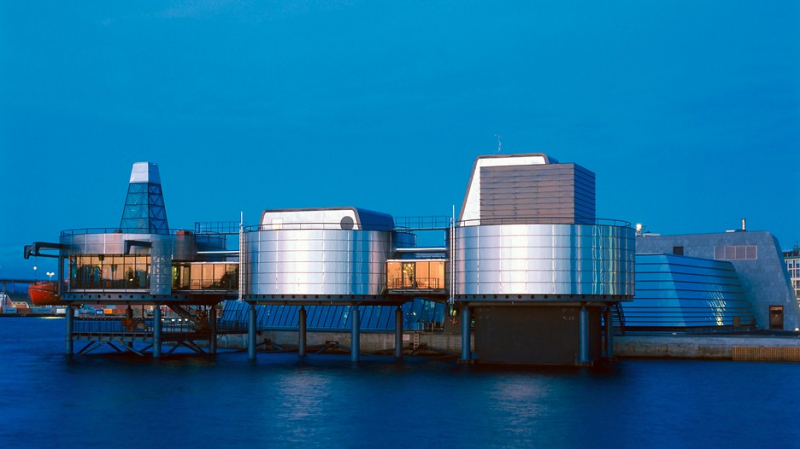
Expedia.ca 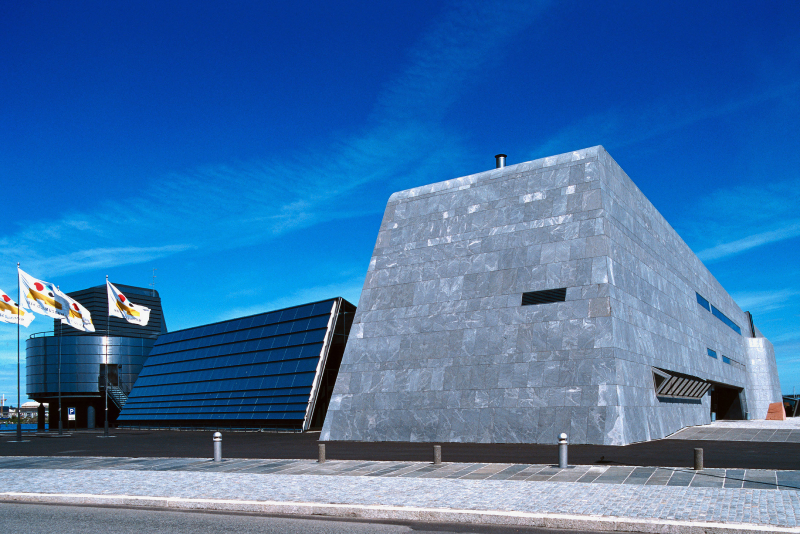
norskolje.museum.no -
Karmøy is a Norwegian island off the west coast. Its name is derived from the Old Norse phrase Kormt, which means "shelter". Fishing has long been the backbone of life here. The Fishery Museum was built in 1998 as a result of the industry's rich heritage. Snhetta architects designed a bold and dramatic architecture for the museum that absorbs and becomes a part of its immediate surroundings.
The Fishery Museum's restricted budget led in a modest yet extremely relevant and contextual structure. It is located on a small inlet and is bordered by hillocks and scattered dwellings. The whole design is comprised of a single extended rectangular frame of in-situ concrete. There are just a few windows along the two long sides, but one enormous window at the end of the wall facing the lake brings in a lot of light to the gray concrete interior, which is connected to the second and third floors by a simple wooden stairway. Visitors enter the museum from the landside and are instantly drawn to the vista of the fjord beyond the large display room. The emphasis is evident here: the collections held within match to the natural environment outside.
Location: Slettavikvegen 26, 4276 Karmøy
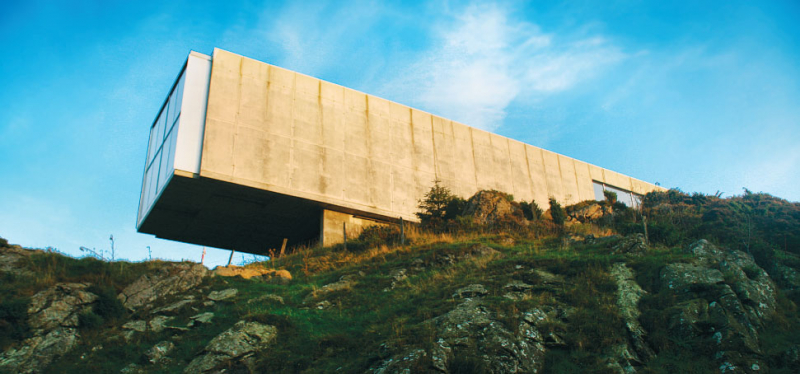
visitkarmoy.no 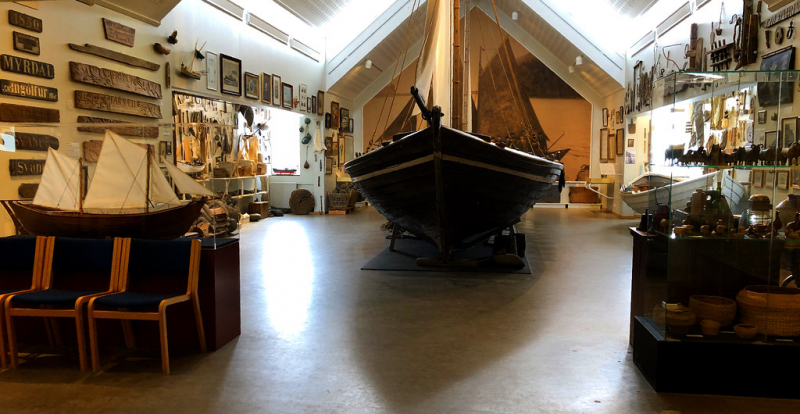
visitkarmoy.no -
Lillehammer opted to expand its art museum, which was erected in 1963 and created by Norwegian architect Erling Viksj, in preparation for the 1994 Winter Olympics. The end effect is a spectacular exploration of the potential of wood and glass, which adds a gorgeous, pure organic structure to the previous Minimalist one.
On three different floors, the permanent display is divided into three key themes: Olympic World, Olympic Games, and Olympic Spirit. The Olympic World section of the exhibition begins on the third level, where visitors learn about the history of the ancient Olympic Games and the rebirth of the contemporary Games in the nineteenth century. A display of Olympic torches, as well as a movie highlighting important milestones in the history of opening ceremonies, are among the highlights. The second floor is dedicated to the Olympic Games. Visitors are exposed to the Youth Olympic Games and the Paralympic Games, as well as sporting equipment for a range of sports.
The Olympic Spirit is the last section of the permanent display, where visitors are made to feel like they are in an Olympic Village and may test their balance, agility, and cerebral talents through interactive tasks. Olympic medals can also be found on display. The restored museum also features a temporary display room, where the museum organizes traveling exhibits on a regular basis.
Location: Maihaugvegen 1, 2609 Lillehammer
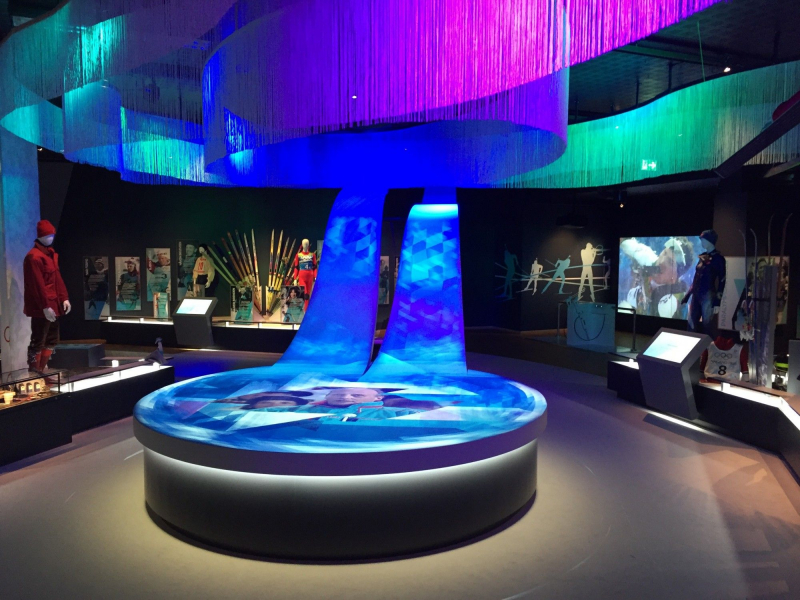
Pinterest 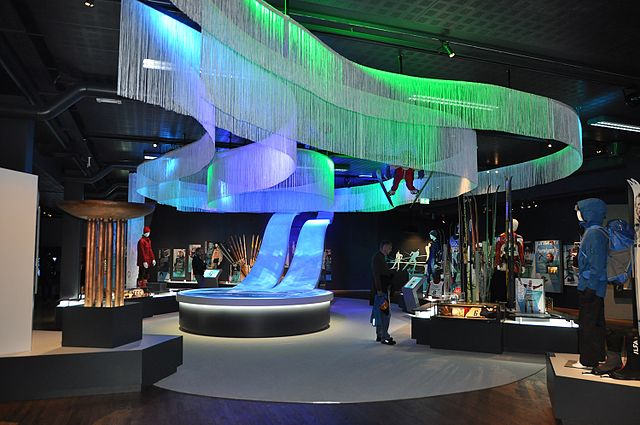
Wikimedia -
Telenor ASA is a Norwegian international telecommunications firm located in Fornebu, Baerum, near Oslo. It is one of the major mobile telecommunications businesses in the world, having operations all over the world but a concentrate on Scandinavia and Asia. It includes large internet and TV distribution activities in four Nordic countries, as well as a 10-year-old machine-to-machine technology research and business line. Telenor owns networks in eight different countries.
The offices, which occupy 34 acres (14 ha) and are located on the old site of Oslo International Airport, make significant use of glass curtain walls, affording staff with breathtaking views of the Oslo Fjord and surrounding mountains. Two curved glass boulevards with sloping walls connect up to four glass and steel office complexes, which are linked to public atriums. Between the boulevards is a big communal space that serves as the building's spine. This structure is high-tech not only because of the mobile and wireless idea with which it communicates, but also because of its practical aspects.
For example, sensors-controlled shade systems limit the heat generated by the huge glass façade, and window blinds are designed to adapt to the location of the sun. The materials and structure of this cutting-edge design reflect the company ambition for openness and transparency.
Location: Fornebu, Norway
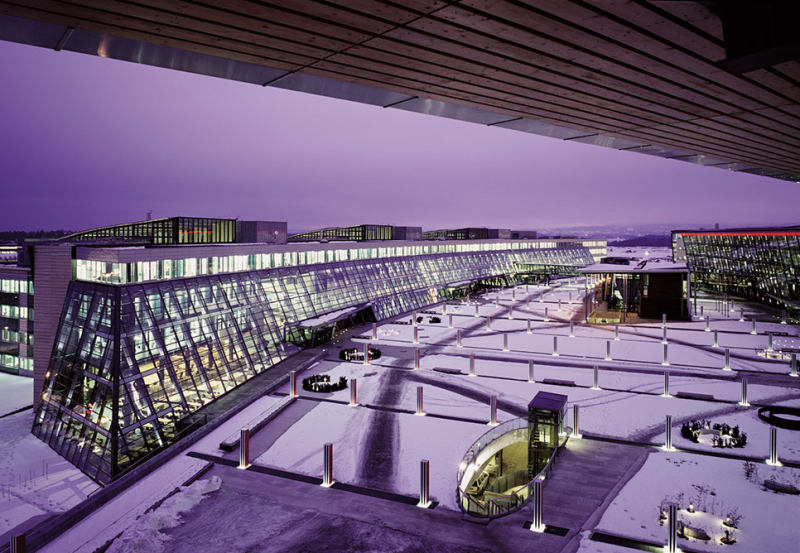
NBBJ 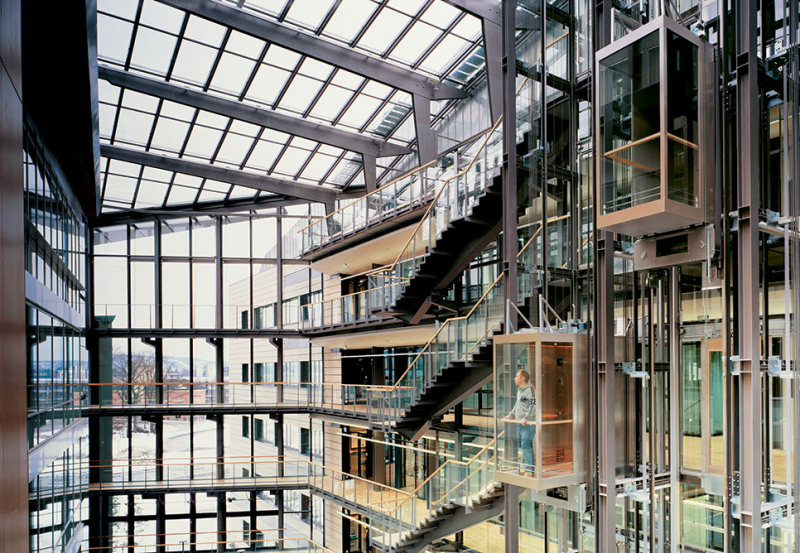
NBBJ -
The Nobel Peace Center (Norwegian: Nobels Fredssenter) in Oslo, Norway promotes the Nobel Peace Prize and the ideas it embodies. The center is also a meeting place for culture and politics, encouraging participation, discussion, and thought on issues such as war, peace, and conflict resolution. The facility is located on City Hall Square in Oslo, Norway. His Majesty King Harald V of Norway dedicated the Nobel Peace Center in 2005, in a ceremony attended by the royal families of Norway and Canada. Wangari Maathai, the recipient of the Nobel Peace Prize, was also present. The Center receives over 250.000 visitors per year and is one of Norway's most popular museums.
The center's imaginative design, including its color schemes, is the work of British architect David Adjaye, while its hi-tech installations are the work of American designer David Small. The Norwegian Ministry of Culture, private donors, and entrance fees help to fund the Nobel Peace Center. Temporary exhibitions are entirely funded. In addition to recounting the story of Alfred Nobel and the other Nobel awards, the Center exhibits the Nobel Peace Prize laureates and their achievements. This is accomplished via the use of multimedia and interactive technologies, exhibitions, meetings, debates, theater, concerts, and conferences, as well as a comprehensive educational program and regularly scheduled guided tours.
Location: Youngstorget, 0181 Oslo Oslo
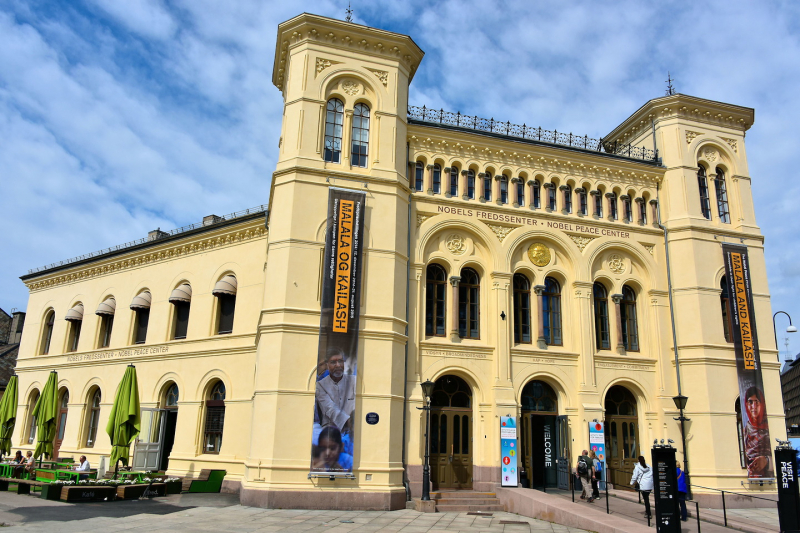
encirclephotos.com 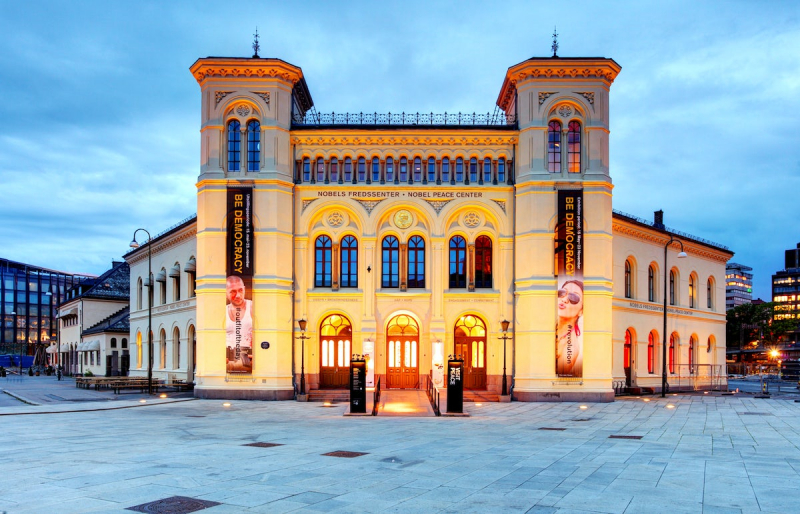
encirclephotos.com -
The Norwegian National Opera and Ballet call the Oslo Opera House (Norwegian: Operahuset) home, as well as Norway's national opera theater. The building is located in the downtown Oslo neighborhood of Bjrvika, near the head of the Oslofjord. Statsbygg, the government organization in charge of managing property for the Norwegian government, runs it. The construction has 1,100 rooms and covers an area of 49,000 m2. The main auditorium has 1,364 seats, while two minor performance halls have capacities of 200 and 400. The main stage measures 16 meters wide and 40 meters deep. The angled outside surfaces of the structure are covered with Carrara marble from Italy and white granite, giving the impression that it is rising from the water.
It is Norway's greatest cultural building since Nidarosdomen was finished about 1300. The building's top bends down to the ground level, providing a wide plaza that invites passersby to climb up and take in the panoramic views of Oslo. While the majority of the structure is made of white granite and La Facciata, a white Italian carrara marble, the stage tower is made of white aluminum, designed by Lvaas & Wagle to resemble traditional weaving patterns. The foyer is encircled by 15-meter-high (49-foot-tall) windows with minimal frame and unique glass that provides maximum views of the ocean. The roof is supported by tiny, angled columns that are also meant to not obstruct views.
Location: Oslo, Norway

mostbeautifulspots.com 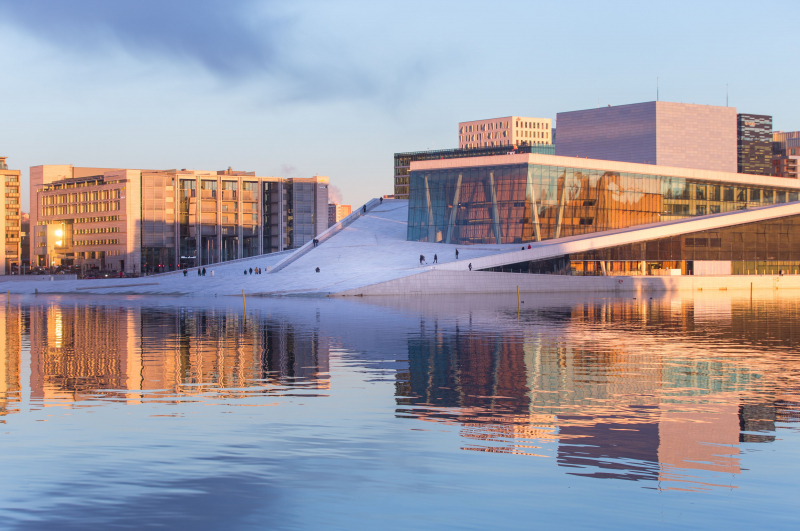
mostbeautifulspots.com











